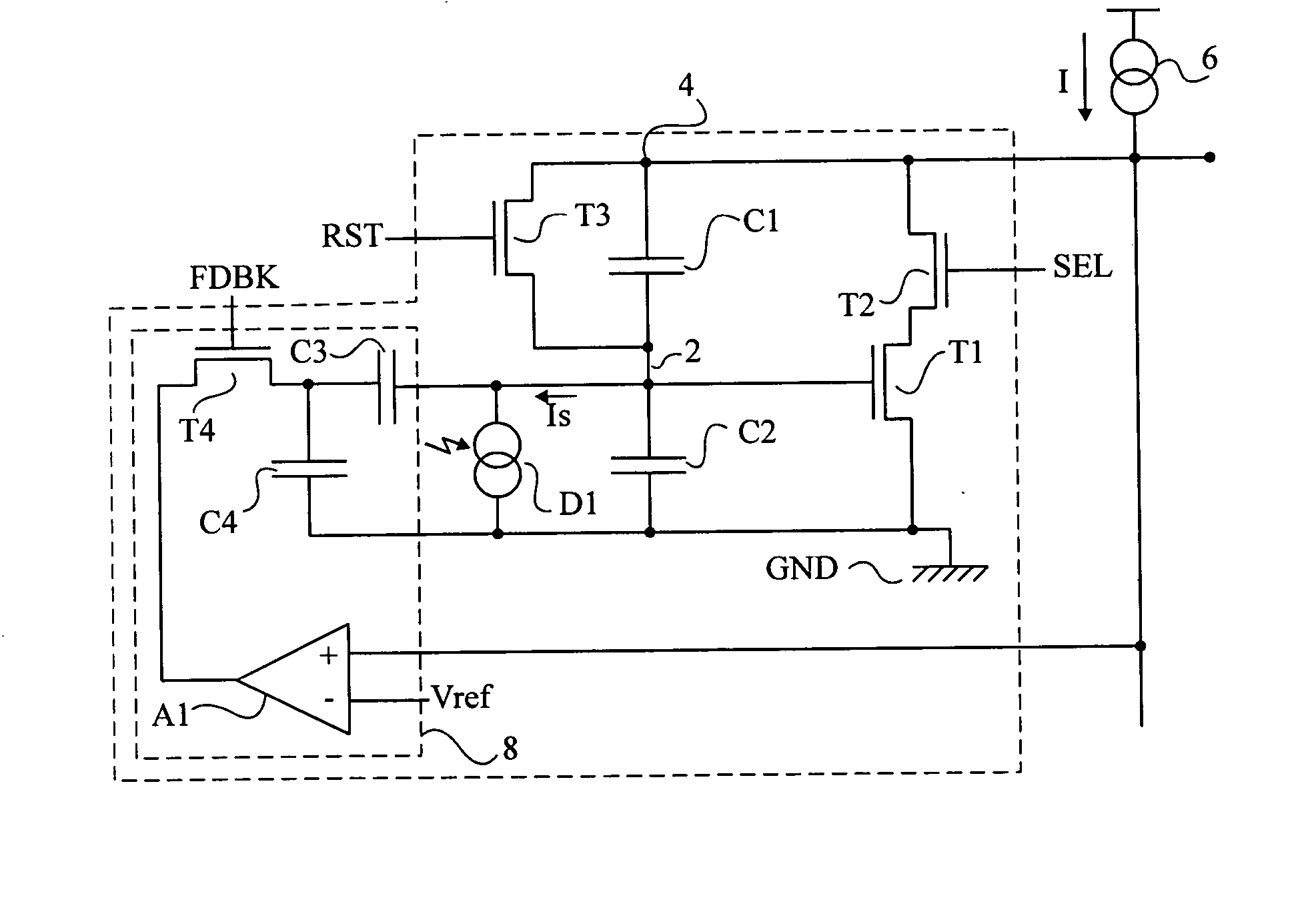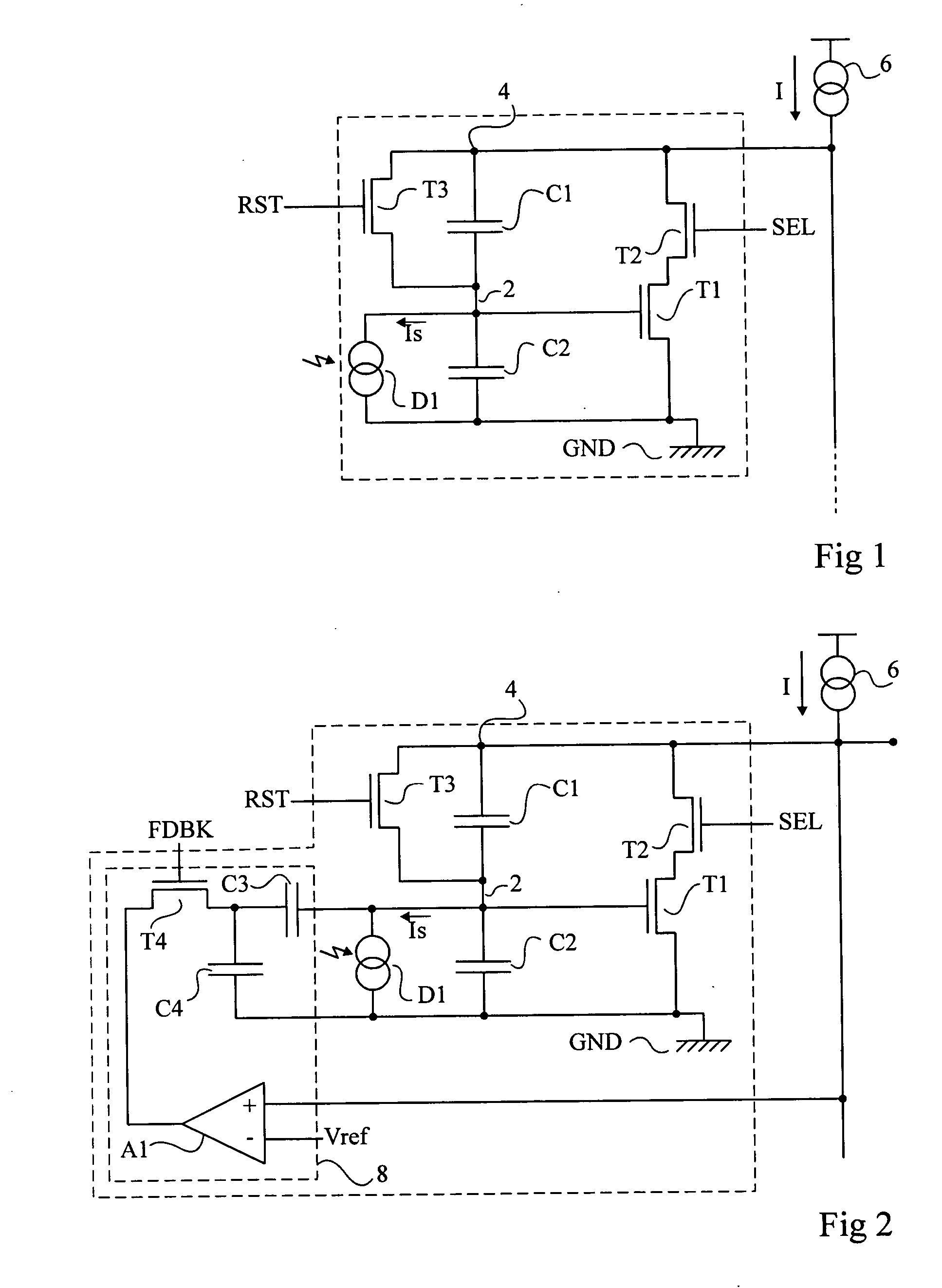CMOS light sensing cell
a light sensing cell and cmos technology, applied in the field of integrated cmos light sensing arrays, can solve the problems of slow charge of capacitor c, capacitor cb>1/b>, and no longer negligible parasitic voltag
- Summary
- Abstract
- Description
- Claims
- Application Information
AI Technical Summary
Problems solved by technology
Method used
Image
Examples
Embodiment Construction
[0030] Same reference numbers correspond to same elements in the different figures. For clarity's sake, only the elements that are useful to the understanding of the invention have been illustrated.
[0031]FIG. 2 schematically represents a CMOS light sensing cell illustrating an aspect of the invention, comprising a sensor D1, capacitors C1 and C2, and CMOS transistors T1, T2 and T3, connected as in FIG. 1.
[0032] The sensing cell further comprises a feedback block 8 comprised of an operational amplifier A1, capacitors C3 and C4 and a MOS transistor T4 of N-channel type. The non-inverting and inverting input of the operational amplifier A1 are respectively connected to the output node 4 and to a reference voltage Vref that will be described later. The output of the operational amplifier A1 is connected to the source of transistor T4. The gate of transistor T4 is connected to a non-illustrated control block supplying a feedback control signal FDBK. The drain of transistor T4 is connec...
PUM
 Login to View More
Login to View More Abstract
Description
Claims
Application Information
 Login to View More
Login to View More - R&D
- Intellectual Property
- Life Sciences
- Materials
- Tech Scout
- Unparalleled Data Quality
- Higher Quality Content
- 60% Fewer Hallucinations
Browse by: Latest US Patents, China's latest patents, Technical Efficacy Thesaurus, Application Domain, Technology Topic, Popular Technical Reports.
© 2025 PatSnap. All rights reserved.Legal|Privacy policy|Modern Slavery Act Transparency Statement|Sitemap|About US| Contact US: help@patsnap.com



